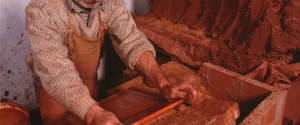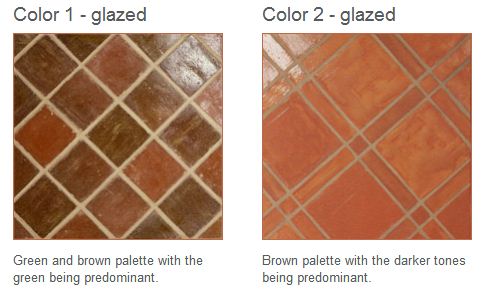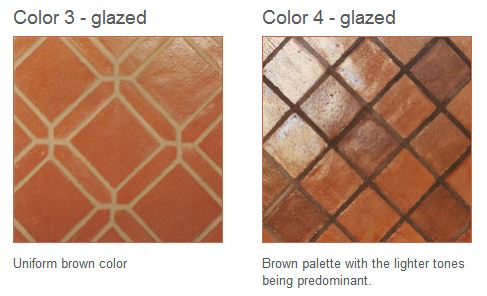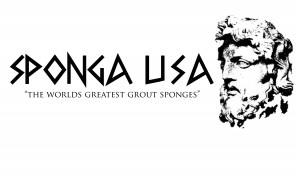Product Feature – Glazed Terracotta
Do you like terracotta but are scared of the maintenance issues? Well don’t fret there is a solution. This week I have invited Octavio Dias of Terracotta Fonte do Bispo; a well-respected producer of terracotta tiles from Portugal, to tell us why they still make terracotta the traditional way, and yet why their product is so easy to care for.

Terracota Fonte do Bispo is located in Portugal, in the foothills of the Algarve Serra, in the clay-rich lands of the municipality of Tavira, from where the raw material is obtained. They are located, near the village of Santa Catarina da Fonte do Bispo, famous for its ancient handcrafted ceramics.
The basic principles of working with clay are very old indeed, and the origins of handmade terracotta have actually been lost in the mists of time. It is made of a mixture of clay (earth) and water, which are combined to make a malleable paste. It is then air-dried to release the moisture, and fired. However, all these processes, the preparation of the clay compacting, grinding, sifting, kneading, moulding, drying and firing have undergone substantial improvements over time resulting in a better quality product, with less environmental impact, optimal of resources and improved working conditions.
The process begins with the extraction of the clay from local quarries. The clay is ground and refined by mechanical means, capable of breaking the clay down into a very fine powder, then blended with water to form the paste. The tile is formed using a combination of ancient hand-forming techniques and modern technology. This creates a high-quality modern terracotta which manages to retain the hand-made, rustic look and feel.
Before firing, the tiles are allowed to dry naturally. They are then fired at high temperatures in modern propane gas kilns. This process ensures a stable and uniform material with fewer irregularities and better control of the colour and shade variations, resulting in a stronger, better quality end product and allowing a significant reduction in the emission of gases into the atmosphere.
The tiles that we produce combine the beauty of traditional, hand-made terracotta with a high quality glazed surface. Consequently our terracotta tiles require none of the usual time-consuming maintenance procedures such as regular sealing, waxing and stripping. The glazed surface means they will maintain their colour and natural beauty for many years. Because of the hand-crafted nature of the tiles, there is a natural variation in shades and no two pieces will ever be alike. This variation in tones is further enhanced by a glazed surface that creates a deep, rich and luxurious finish to the floor.
There are four colour pallets to choose from (see below). Each colour pallet contains a carefully created blend of shades, so the colour should not be judged on a single tile alone. Unlike mass-produced ceramic tiles, our handcrafted terracotta tiles are defined by a spectrum of shades which are similar but distinct with a predominant colour.
Our craftsmen have perfected the art of combining earth, water and fire, what you can achieve with them is limited only by your imagination and creativity. Other tile formats and colours, as well as decor pieces are available to order.


For more information contact info@tileandstoneblog.co.uk or Terracotta Tiles
The company is actively seeking distributors in the UK
Copyright Ian Taylor and The Tile and Stone Blog.co.uk, 2013. See copyright notice above.





Reader’s Comments